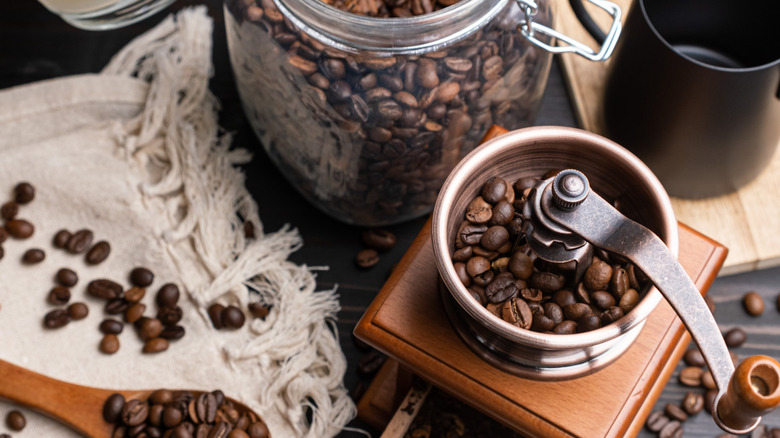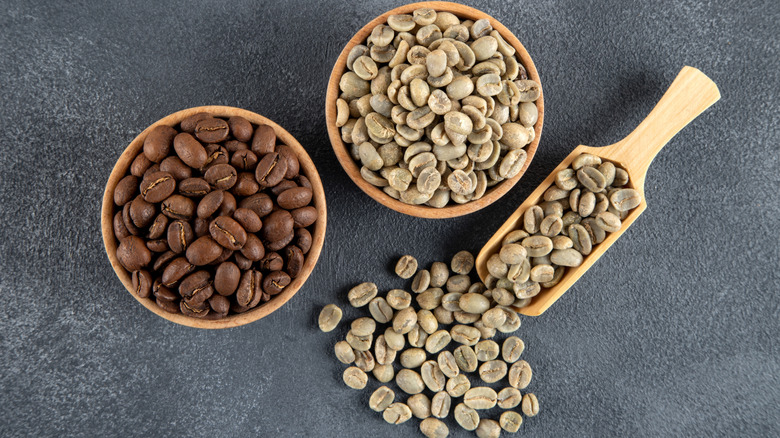The Best Way To Cool Off Small Batches Of Roasted Coffee Beans
We may receive a commission on purchases made from links.
Coffee lovers may have their preferred roasters or favorite store-bought coffee brands, but roasting your own beans will transform you into a true connoisseur. While coffee roasting companies have high-tech commercial machinery, home roasting uses common household appliances. A case in point is using a mesh colander, like this Tiawudi from Amazon, to cool roasted coffee beans fresh off the heat.
Most of the home-roasting coffee projects are made in small batches in a skillet over the stove, and a colander is the perfectly sized receptacle to receive the beans. With evenly spaced holes, it'll let air circulate around the beans from all directions. Plus, a metal colander won't melt but will instead help absorb the heat emanating from the beans.
If you're wondering why cooling beans is so important, you can think of throwing the beans in a colander as having the same effects as shocking green beans. Removing the beans from the heat is done at the precise moment they've reached their most flavorful peak. By cooling them quickly, you'll essentially freeze this peak moment in time and lock in all of the flavors and aromas that have bloomed during the roasting process.
If you leave beans in a hot roasting pan or crowd them, they'll continue to cook, incurring unpleasantly bitter or burnt tastes. Sticking to small batches will give you more control over the roasting process as well as more room for experimentation; you can roast small batches of different coffee beans for your own personal coffee tasting experience.
More tips for roasting coffee at home
The keys to roasting coffee beans are controlled temperatures and constant movement — gradually increasing temperatures while agitating the beans results in successful and even roasting. Consequently, the best method for home roasting small batches is on a cast iron skillet over the stove. You can use an oven thermometer to monitor the temperature of your skillet.
An even better appliance that'll roast the coffee beans in half the time is a Great Northern stovetop popcorn popper. That said, home roasting machines from brands like Lueur are available for purchase at very accessible prices and are worth the investment if you become a regular roaster.
There are key moments in the roasting process that mark the different types of roasts, like light and dark. Both visual and auditory cues announce the progression of coffee beans and dictate when you take them off the heat. The auditory cues are appropriately named "cracks," as they define both the sound and the physical breaking of the beans as they are heated. Remove the beans right after the first crack for a light or city roast. If you wait until a second crack to remove the beans, you'll get a dark roast, while a medium roast is a minute or two after the first crack. Removing the beans in a timely manner is essential; even though a colander will cool them, they will still cook and release their aromas as they cool.

